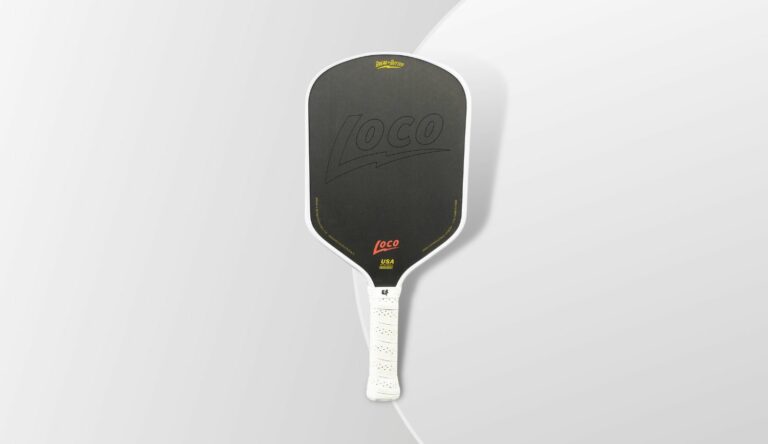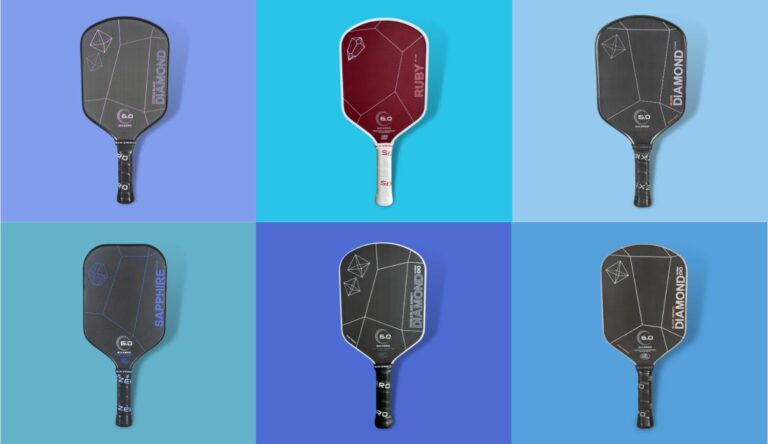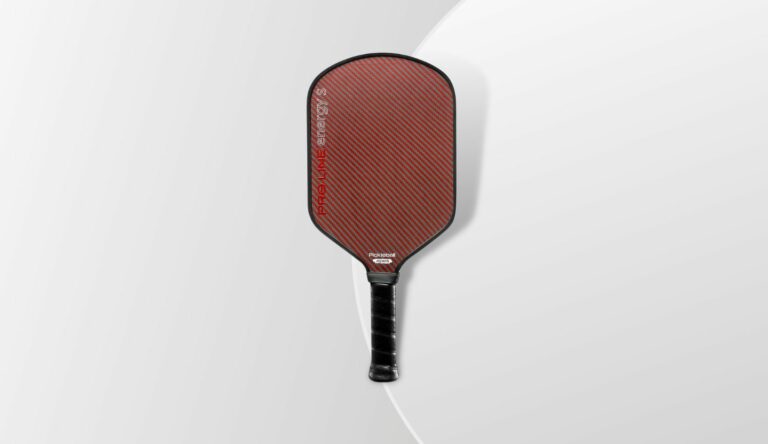You need to be good at dinking if you want to be a high-level pickleball player.
To become a formidable dinker, you’ll need to learn how to hit aggressive dinks. Being aggressive with your dinks will significantly improve your control of the NVZ and apply point-winning pressure on your opponents.
In this article, you’ll learn actionable strategies to move your opponent out of position at the NVZ and throw off their composure. By the end, you’ll know how to transform your dinking game from passive to aggressive, making you a much more confident and daunting player.
Contents
1. Move your opponent around
The first tip is to focus on varied placement and depth when hitting dinks. You want to keep your opponents off balance as much as possible. Hitting dinks that force them to shift both horizontally and vertically will make it harder for them to respond with accurate shots.
For example, I might hit a dink deep into the left corner to force my opponent to take extra steps. Then I’ll hit one back to the middle to bring them back. I’ll repeat this rocking motion until I feel I’ve created an opening, then hit an even deeper dink to the opposite corner. This catches them by surprise and sets up opportunities to finish points.
The key is to not always go for the deepest dink but to move them out of position first. Aim to place your dinks at sharp angles close to the sidelines. Use unexpected angles, like a sudden acute angle after a series of straight dinks. This unpredictability can catch your opponent off-guard.
When your opponent manages to hit a good dink in response, it’s essential to respect that and reset to a neutral position. From there, you can continue to apply pressure. Don’t get greedy. Re-establish the rally and start rocking them side to side again until you create another opening.
I’ve found this method extremely effective against players who are slower to react and reposition themselves. Mixing deep shots with sharp angles gets them out of position and rhythm, causing more popped-up returns that you can put away.
2. Learn to hit deep yet unattackable dinks
Newer players often won’t hit their dinks deep enough because they fear that their opponent will be able to attack these shots. But, well -hit deep dinks put a lot of pressure on your opponents.
You do increase the likelihood that your shots can be attacked when you hit deep dinks, but properly placed deep dinks are well worth the risk when developed.
Deep dinks force your opponent to hit angled down by their feet to return the dink, often requiring them to step back. When you aim at the outside or inside foot, you can really get them flustered and force a weak return.
3. Put Spin on Your Dinks
If you want to be aggressive with dinking its important that you learn how to impart spin on dinks. This better prevent dead dinks and puts pressure on opponents, keeping them reactive.
It’s essential to utilize different spins on your dink shots – mixing topspin, underspin, and slice. This prevents your opponent from finding an easy rhythm and keeps them off-balance.
Too often, beginner players hit basic shallow topspin dinks with little pace or spin. These “dead dinks” sit up, allowing aggressive opponents to take control. Instead, you want to be the aggressor by varying spins with plenty of depth to move them back and side-to-side.
Mastering slice and underspin dinks takes practice, but even adding some extra topspin variation is highly effective. The key is changing speeds, trajectories, and spins to disrupt your opponent’s timing and prevent them from settling into a rhythm.
4. Disguise your shots
Disguised shots are a crucial element in aggressive dinking. These shots appear to be one thing but turn into something entirely different at the last moment.
Practice hitting dinks that look like they’re going to one side but switch directions at the last second. Use your body language to suggest one type of shot while delivering another. A slight turn of the shoulders or hips can be enough to mislead your opponent, keeping them guessing and leading them out of position.
During practice, focus on subtle body movements to perfect this art. It’s about convincing your opponent just enough to make a wrong preparatory move.
5. Look for opportunities to take the ball out of the Air
Hitting the ball out of the air in a dink battle, i.e., a volley dink, helps you control the pace and keeps your opponent off-balance.
By taking dinks out of the air, you can significantly reduce the time your opponent has to react, rushing their shot preparation and potentially leading them to hit a weak return. I like to take my dinks out of the air when I’ve created an offensive opening, such as hitting behind my opponent or forcing them into an awkward position.
You of course, need enough reach to volley an incoming dink. You won’t be able to hit all of them this way. It’s good to always be looking to set them up, though, as it helps keep you in the good habit of being right up on the kitchen line.
Make sure to brush plenty of topspin or underspin on midair dink attacks.
With practice, you’ll be able to aim your dink volleys well – firing them into the corners for outright winners.
Bonus Tip: Look to speedup to their dominant shoulder
While dinking, you always want to be looking for speed-up opportunities to force a quick resolution to the point.
Since most players naturally take a ready position facing their backhand side, their dominant forehand shoulder is vulnerable to a quick attack. If you want to transition from aggressive dinking to an aggressive drive, try speeding up to that dominant shoulder. You’ll force a lot of cramped shots or pop-ups.
Wait for an opportune moment to do this, such as after a weaker return from your opponent, to target their dominant shoulder. Pay attention to how your opponent positions themselves and adjust your targeting accordingly.
Conclusion
By incorporating these strategies into your pickleball play, you’ll notice a significant shift in your ability to control and dominate the dink game.
Start by implementing these tips in your practice sessions and see how they enhance your game. During practice, work on both forehand and backhand angled dinks. The ability to execute these shots from both wings adds a formidable layer to your game. Experiment with different spins in practice sessions before using them in a match.
It takes practice, but soon, you’ll be controlling the net through superior dink placement, spin variation, and strategic strikes. Your opponents will grow frustrated trying to get anything past you.
Remember, the key to success in pickleball is not just skill but the strategy behind each shot. Sometimes, it’s about reading the game and adapting on the fly rather than sticking rigidly to a pre-planned strategy.
Keep Reading:
- 17 Pickleball Sayings Worth Knowing
- Beginner Pickleball Tips
- Intermediate Pickleball Tips
- Third Shot Drop Tips
- Third Shot Drive Tips
- Best Paddles for Beginners
- Best Paddles for Intermediate Players
- Best Paddles under $100

Stay in the loop
Get pickleball news, educational guides, and gear advice sent to your email in a once a week round-up post.






